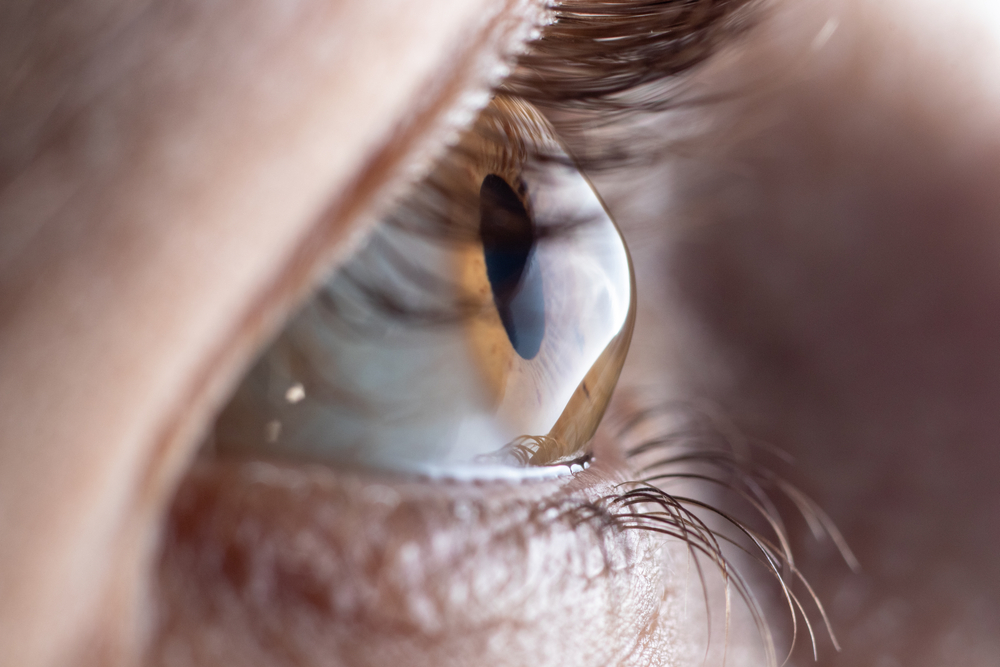
Keratoconus is a progressive eye condition that affects the cornea. It is characterized by the thinning and bulging of the cornea into a cone-like shape. This abnormal shape prevents the light entering your eye from being focused correctly on the retina, causing a distortion of vision.
What is Keratoconus?
The human cornea is typically round and dome-shaped. However, in keratoconus, the cornea becomes thin and bulges outwards, forming a cone-like shape. This change is due to the weakening of tiny fibers in the cornea called collagen.
Collagen helps hold the cornea in place and maintain its shape. However, when these fibers weaken, they cannot hold their round shape, and the cornea bulges outward. This irregular shape prevents the light entering the eye from focusing correctly on the retina, leading to a distorted and blurred vision.
What are the Causes and Symptoms of Keratoconus?
The exact cause of keratoconus is still unknown. However, it is believed to be a combination of genetic, environmental, and hormonal factors. Some researchers suggest that it might be due to an imbalance of enzymes within the cornea, which causes the cornea to weaken and bulge outwards. Additionally, keratoconus is also associated with certain allergic conditions and chronic eye rubbing.
The symptoms of keratoconus usually start to appear in the late teens or early twenties. The first signs can be a slight blurring of vision, increased light sensitivity, and eye redness or swelling. As the condition progresses, symptoms may include increased blurring and distortion of vision, increased nearsightedness or astigmatism, frequent changes in eyeglass prescription, and in some cases, the inability to wear contact lenses due to discomfort.
Treatment Options for Keratoconus
Although there is currently no cure for keratoconus, several effective treatment options can slow its progression and manage its symptoms. The treatment largely depends on the severity of the condition and how quickly it is progressing.
In the early stages, glasses and soft contact lenses can help correct the nearsightedness and astigmatism caused by the bulging cornea. As the disease progresses and the cornea continues to thin and change shape, rigid gas permeable (RGP) contact lenses may be required to ensure a clear vision.
For more severe cases or when contact lenses and other treatments no longer provide clear vision, surgeries like corneal cross-linking, Intacs implants, Topography-guided conductive keratoplasty, or even corneal transplant may be considered.
Taking Steps to Manage Your Keratoconus Today
Understanding keratoconus is the first step in managing this condition effectively. While it may cause significant vision impairment, remember that it's not a hopeless situation. With the right information and healthcare support, keratoconus can be managed effectively, and you can lead a normal and productive life.
If you or your loved one has symptoms of keratoconus, visit Refined Eyecare Optometry in our Torrance, California office. We will provide the best treatment options and advice for living with this condition. Call or text (310) 214-0409 to schedule an appointment today.







